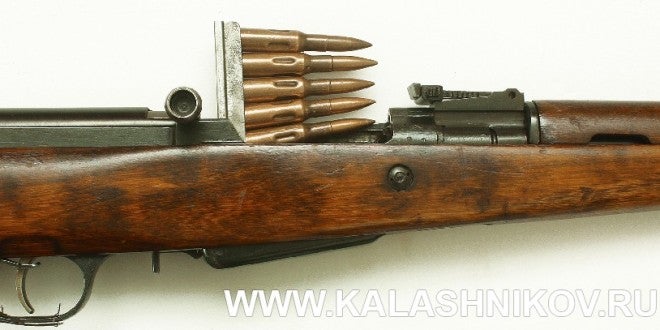Kalashnikov Gun Magazine has published another interesting article telling about Sergei Simonov’s 7.62x54mmR SKS-31 rifle that preceded the SKS that we know today. The purpose of KGM’s article was not only to tell about this rather unknown rifle but also to bust the myth according to which SKS has been used in WW2.
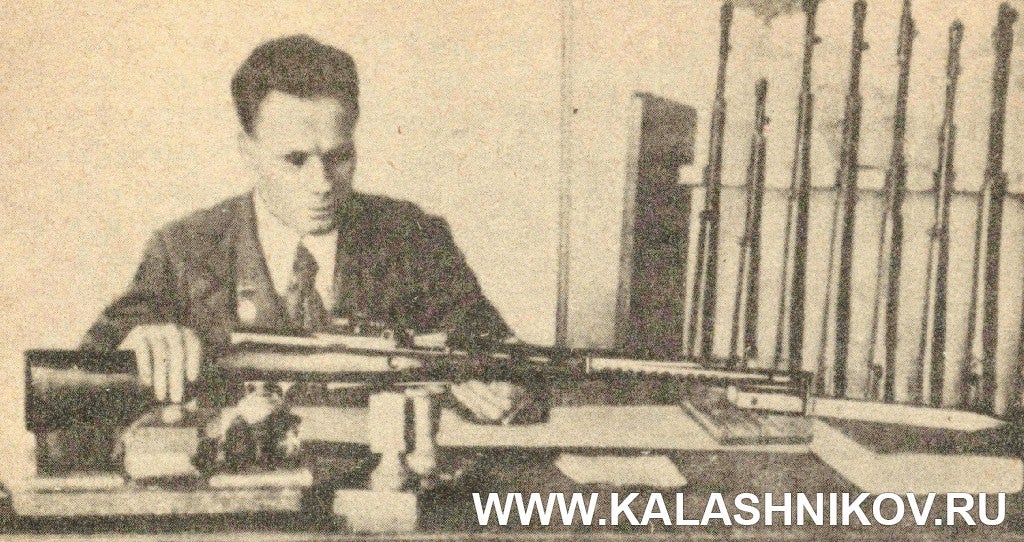
Sergei Simonov working on the SKS-31 carbine
Long story short, the myth was born probably because the SKS-31 rifles were issued to a Soviet Army unit during the WW2 but they never took part in actual fights against the enemy. So the SKS we know today never fought in WW2. Its predecessor, the SKS-31 was issued in limited numbers for testing but never took part in a fight. That’s it. The myth is busted. Now let’s get to the history of SKS-31.
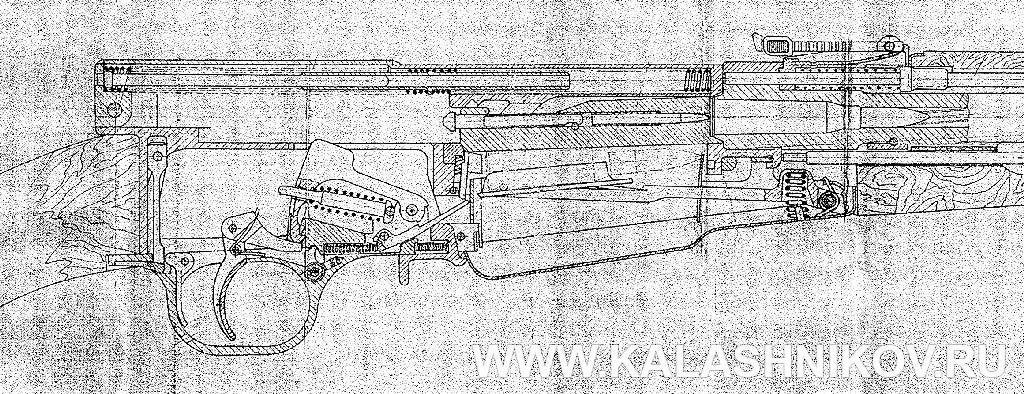
Cutaway drawing of the SKS-31 carbine. You can clearly notice similarities with the 7.62x39mm SKS design.
In the early ’40s, arms designers in the Soviet Union were tasked to develop a lighter and more compact carbine version of the self-loading rifle chambered in 7.62x54mmR. Many of the designers that were working on this concept were trying to design a shortened version of Fedor Tokarev’s SVT-40 rifle. However, Simonov decided to make a carbine based on his SVS rifle design that was the contender of Tokarev’s rifle. As a result, Simonov submitted to these trials a carbine called SVS-53. Although the SVS-53 carbine showed a poor performance when tested in harsh environmental conditions and had breakages of minor parts, the design concept itself impressed the military officials and they came to a conclusion that if further improved, Simonov’s design could make a successful carbine.

SVS-53

SKS-30

SKS-31
Simonov started working on improving the design of his carbine. In April of 1941, he came up with two versions of the new carbine called SKS-30 and SKS-31. Both rifles were chambered in 7.62x54mmR and they had mostly identical design with the exception of magazine design and capacity. SKS-30 was fed from a 10-round en-bloc that was inserted from the bottom of the rifle. SKS-31 was fed from the top via stripper clips and had a 5-round magazine capacity. Testing of these two rifles showed that bottom en-bloc feeding was quite a troublesome and time-consuming process compared to the magazine change of the SVT-40 and even compared to the top stripper clip loading method. In order to load a new en-bloc, the shooter had to open the floor plate, remove the empty en-bloc, insert a new one (loaded with ammunition) and close the floorplate. The result of this initial testing was the decision made in favor of the stripper clip fed SKS-31.
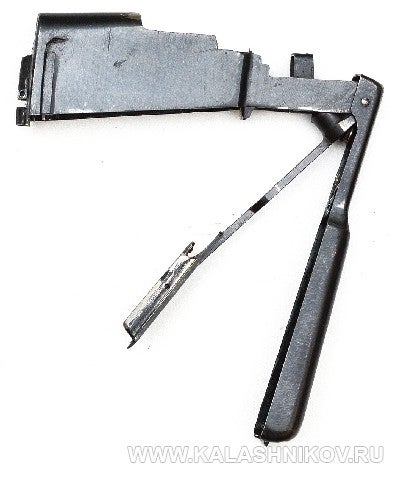
The disassembled magazine of SKS-31
Besides being more efficient in terms of the reloading speed, the SKS-31’s 5-round magazine also proved to be more reliable compared to the en-bloc of the SKS-30. Another advantage of the SKS-31 was that its magazine was almost flush with the stock.
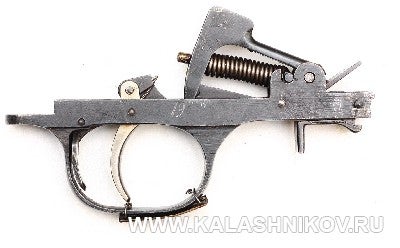
Another important feature that impressed the military officials was the weight of SKS-31 carbine. With an overall length of 1,085mm (about 43″) this weapon weighed only 2,900 grams (6 lbs 6 oz). In fact, Simonov’s carbine with a bayonet, scabbard, and 90 rounds of ammunition was over one kilogram (more than 2 lbs) lighter compared to the Tokarev carbine.

For further testing the carbine, the Soviet government ordered 50 SKS-31s. This first batch was to be manufactured in the plant #314 located in Mednogorsk. However, this was a wartime and plant #314 was busy manufacturing SVT-40 rifles and basically had no time to dedicate to making the SKS-31 carbines. They had to delay the manufacturing of SKS-31s multiple times. They were supposed to make the batch of 50 SKS-31 rifles by July of 1942, but they managed to finish this order only in May of 1944.

Once these 50 rifles were made, they started the testing process. One of the rifles was sent to a proving ground for barrel life testing and proved to be extremely reliable with 1.76% of malfunctions from 8,000 rounds fired through the rifle. But this was a square range test. The 37 rifles issued to the units of the 1st Belarussian Front generated quite a different feedback. According to the personnel who were issued these rifles, if not properly cleaned and oiled, the SKS-31 carbines were causing a number of malfunctions such as failures to feed, extract, eject etc. There was also a high probability of rimlock in the magazine.
Several SKS-31s were also sent to “Vystrel” Classes (Soviet training program for officers) for testing. The officers testing these rifles noted that due to the light weight, these carbines had harsh recoil making it harder to do follow up shots thus decreasing the practical rate of fire. They also noticed that after only 50 rounds fired in quick succession, the shooters started to feel pain in their shoulders. The muzzle brake of the rifle mitigated the recoil to some extent but caused another problem. The report was so loud that it was almost impossible to fire the gun from confined spaces. In fact, in some cases, the report caused temporary deafness of the shooter. The muzzle flash was also excessive compromising the shooter’s location even in daytime.

Perhaps the only feature that soldiers liked in these carbines were their light weight. The tests also showed that these are quite accurate firearms. The accuracy of the SKS-31 carbine was comparable to 91/30 Mosin-Nagant rifles and was better than that of SVT-40 semi-auto rifles. At the end of the day, despite having some advantages, the overwhelming amount of issues lead to a final decision to retire these carbines from their short service life.
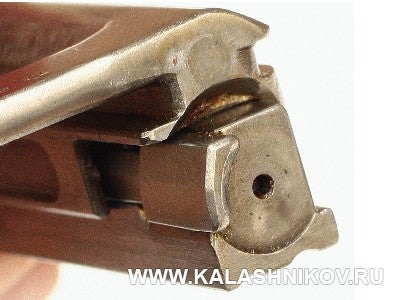
Despite all the problems, the development, testing, and deployment attempt of the SKS-31 carbine allowed Soviet designers to gain huge experience in designing self-loading combat firearms. For example, they found out that increasing the weight of the BCG would allow to increase the overall reliability of the action. Lessons like that were learned and used by many other Soviet arms designers in their future designs. Simonov himself fixed all the problems of his basic action and managed to later design the 7.62x39mm version of his carbine which was ultimately adopted in 1949 as the SKS carbine that we all know today.
Sources:
Chumak R. (2018, July 15). “СКС, который так и не вступил в бой”. Kalashnikov Gun Magazine. Retrieved from: https://www.kalashnikov.ru/sks-kotoryj-tak-i-ne-vstupil-v-boj/
Images from www.kalashnikov.ru
 Your Privacy Choices
Your Privacy Choices
